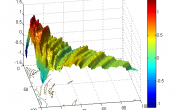When you are performing a technical analysis, you need to focus on various indicators and what they say. Closely analyze the indicators and the bigger picture will be in front of you. Same is the case with the asset trading business. There are many indicators you must consider when trading securities and one of those indicators is the Money Flow Index (MFI).
Money Flow Index
The money flow index is an indicator which shows the strength of money flowing in and out of asset trading. It is interlinked with RSI (Relative Strength Index). The main difference between the two is that RSI only considers prices while money flow index (MFI) takes both price and volume into account. Its range is from 0 to 100.
All the bars whose average price is more than or less than the previous bar are considered while calculating the MFI. Index values are used to plot the money flow. The price and volume nature gives more in-depth information from different angles which could help in determining the progress towards your goal. The money flow index can show lot of fluctuation and highlights overbuying and overselling in an effective way.
Overbought and Oversold
On a scale from 0 to 100, a value of 20 or less is considered oversold and a value of 80 or above is considered overbought. This is also known as accumulation and distribution. It is used to indicate the momentum and direction of the market. You will have to add the distribution and accumulation values of all the trading days and divide it by the number of days you want to find MFI of.
Calculations
Firstly, determine the actual price by using the following formula:
Price = (High + Low + Close)/3
Next, calculate the money flow by following formula:
Raw money flow = Price × Volume
Specify the number of days you are trying to find the money flow for. For example, you want to find money flow for 20 days. Now, it is time to calculate the ratio of money flow by using the following formula:
Money flow ratio = (20 days’ accumulation)/(20 days’ distribution)
Accumulation and distribution can also be replaced with positive and negative money flow respectively in the above formula.
The final step is to find the money flow index. The formula to find the money flow index is:
Money Flow Index = 100 – [100 / (1+Money flow ratio)]
Many traders are looking to take advantage of opportunity when price and money flow index move in opposite directions. This brings about a significant change in the market. Divergence of these two factors, price and money flow index, can be beneficial or can also be disastrous depending on the situation you are in. It is a little risky but if you consider some other factors then you will end up on the safe side.
Other Factors
It would be much better for you if you consider factors other than price and volume because you will be able to see the bigger picture and can easily make the right decision. If there are large gaps in price action, then there is some problem because calculation of money flow is done by taking mid-points of price action into account. If there is a large gap, then it means some mid-points are missing and the complete calculation becomes suspicious and ambiguous.
If the mid-points are missing, the results will be disturbed. It is highly recommended to verify your results through other indicators and don’t depend only on price and money flow. You can also check out exponential moving averages and moving average convergence and divergence which are more accurate as compared to money flow index indicator.
It can give early warning signs for a changing currency trend so you can be prepared beforehand to tackle such issues and save yourself from losses. The STC indicator can also be used but it was primarily developed for the currency trading. The STC indicator reduces the risk of false signals significantly. With computers at your disposal, you can quickly judge the accuracy and reliability of prices thanks to trading software. Be aware of the latest indicators because they might be more efficient as compared to older methods.
Tradersdna is a leading digital and social media platform for traders and investors. Tradersdna offers premiere resources for trading and investing education, digital resources for personal finance, market analysis and free trading guides. More about TradersDNA Features: What Does It Take to Become an Aggressive Trader? | Everything You Need to Know About White Label Trading Software | Advantages of Automated Forex Trading





































